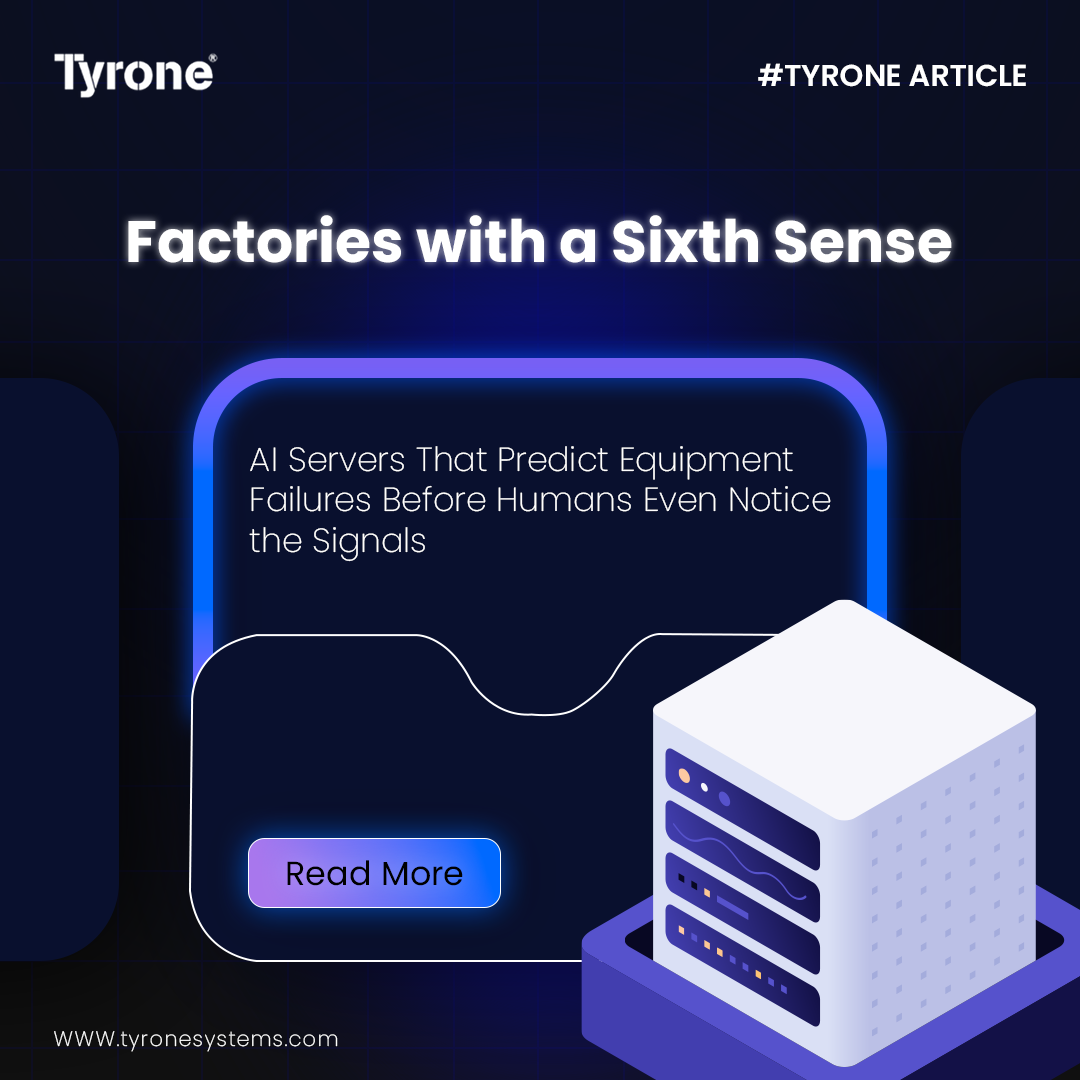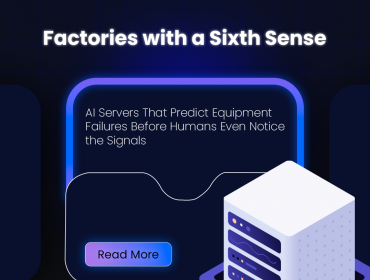In today’s hyper-competitive industrial landscape, unplanned equipment failures are more than just an operational headache, they are a major threat to operational continuity, cost control, and long-term competitiveness. What if factories could sense impending breakdowns long before they happen? AI-powered predictive maintenance systems are delivering precisely that: a “sixth sense” for machinery. For stakeholders, board members, plant heads, and CAPEX decision-makers, the implications are profound.
The Shift from Reactive to Predictive: Why Factories Need a Sixth Sense
Traditional maintenance strategies, reactive maintenance (fix after failure) or scheduled preventive maintenance, suffer from key limitations. Reactive maintenance invites downtime, emergency repair costs, and production loss. Scheduled maintenance often results in unnecessary servicing or missed early-stage degradation.
Enter AI-driven predictive maintenance: by continuously analyzing sensor data (vibration, temperature, pressure, acoustic signatures, electrical load) and running advanced analytics or machine learning models on powerful servers (or edge devices connected to servers), it becomes possible to surface subtle early-warning signs of failure, days, weeks or even months before a breakdown.
For stakeholders, this represents a paradigm shift: moving from “break-fix” cost cycles to data-driven, just-in-time maintenance, minimizing disruption, optimizing CAPEX/OPEX, and extending asset life.

Measurable Business Impact: Downtime, Costs, Asset Life
Adopting AI-based predictive maintenance yields quantifiable improvements:
- Many implementations report 20–50 % reduction in unplanned downtime. (Source: SiiT)
- Maintenance costs generally shrink by 20–40 %, due to fewer emergency repairs, reduced spare-part usage, and optimized scheduling. (Source: StratagenSystems)
- For many factories, ROI is realized within the first 12–18 months of adoption. (Source: SEOSandwitch)
These are not minute improvements, for large-scale plants, even small reductions in downtime translate to substantial savings and increased throughput.
The Role of AI Servers, IIoT and Edge Analytics
At the heart of the “sixth sense” capability lies a stack of technologies:
- IIoT sensors distributed across critical equipment capture real-time signals: vibration data, temperature trends, acoustic noise, pressure, and other operational parameters.
- AI models and analytics engines, often hosted on robust servers or edge devices, analyze these high-frequency data streams to detect anomalies, subtle pattern shifts, or drift behaviors that precede failure.
- Predictive maintenance platforms then translate these discoveries into actionable alerts, enabling maintenance teams to schedule interventions during planned downtime, reorder spare parts, and avoid emergency breakdowns.
In modern implementations, some systems have demonstrated failure prediction lead times of several weeks in advance, providing an opportunity for planned maintenance and avoiding catastrophic breakdowns.
Strategic Value for Stakeholders: More Than Just Maintenance
For stakeholders evaluating capital and operational strategies, adopting AI-based predictive maintenance delivers benefits beyond mere uptime and cost. Key strategic value includes:
- Improved asset utilization and CAPEX efficiency, extending machinery life means deferred capital expenditure on replacements.
- Enhanced production predictability and supply-chain reliability, fewer breakdowns help meet delivery timelines and avoid costly delays or penalties.
- Operational resilience and scalability, predictive maintenance systems can scale across multiple lines or plants; as digital twins, IIoT, and AI infrastructure mature, the marginal cost of adding new monitored assets declines.
- Risk mitigation and safety, by flagging potential failures (especially critical ones) before they occur, the plant reduces risk of accidents, regulatory non-compliance or liability.
- Data-driven decision making, amassed operational data offers insights into performance trends, maintenance cycles, energy usage, and more, feeding into broader strategic planning and continuous improvement.
Thus, investment in AI servers and predictive maintenance is not just about maintenance, it becomes a central lever for operational excellence, long-term savings, and competitive advantage.
Implementation Considerations: What Stakeholders Should Weigh
While the upside is clear, deploying predictive maintenance with AI is not trivial. For stakeholders planning adoption:
- Sensor and data infrastructure: Sensors and data acquisition systems must be correctly selected and deployed; reliability, uptime, and data integrity are critical.
- Compute resources and data processing: High-quality, low-latency data processing (on-premise servers or edge + cloud hybrid) is key, inadequate infrastructure undermines predictive accuracy.
- Model accuracy and domain adaptation: AI models must be trained on realistic operational data; overfit or generic models may miss early failure signs or produce false positives.
- Change management and workforce readiness: Plant staff and maintenance teams need upskilling, adoption requires a shift from reactive culture to data-driven maintenance; resistance or lack of trust in “machine predictions” can limit ROI.
- Cost-benefit analysis over asset lifecycle: Understand CAPEX vs OPEX trade-offs, upfront investment in sensors, servers, and analytics must be justified via projected downtime savings, maintenance cost reduction, and extended equipment life.
Real-World Momentum and Market Trends
The global market for predictive maintenance solutions is growing rapidly, driven by rising awareness of AI’s potential to reduce failures, optimize operations, and cut costs.
More factories are piloting AI-driven maintenance systems, across heavy manufacturing, automotive, energy, chemicals, and discrete manufacturing lines. As legacy machines get retrofitted with sensors and IoT devices, AI maintenance becomes accessible even without brand-new equipment.
This trend positions predictive maintenance not as a niche innovation but as a core industrial capability, one that can define competitiveness in the coming decade.

Conclusion: From Maintenance Expense to Strategic Asset
For stakeholders, whether CFOs, operations heads, or board members, AI-powered predictive maintenance represents a strategic investment. It transforms maintenance from a reactive cost center into a proactive, data-driven asset that delivers measurable savings, improved uptime, extended equipment life, and operational stability.
The factories of tomorrow will not be defined simply by automation or robotics, they will be defined by awareness: the ability to sense, forecast, and prevent failure before humans even notice the signals. For those who invest now in AI servers, sensors, and predictive frameworks, the payoff is long-term resilience and competitive edge.
AI-enabled predictive maintenance is not just maintenance. It’s a sixth sense, and for modern manufacturing, it’s a necessity.
Notable Statistic
One of the most compelling metrics: companies that implemented AI-driven predictive maintenance report a 30–50% reduction in unplanned downtime.
Recommendation for Stakeholders Begin with a pilot on critical/high-value assets, monitor ROI in terms of downtime reduction, maintenance cost savings, and asset health. Use results to build a data-driven business case for scaling across the plant or enterprise.












